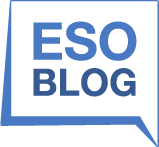
Celebrating women at ESO — part II
Talking motivation, role models, and those ‘Eureka!’ moments
On the occasion of International Day of Women and Girls in Science, we look at the achievements of some of the women driving forward astronomy at ESO.
Camila Navarrete — ESO Fellow at Paranal Observatory
Constanza Araujo Hauck — Optical Engineer for the Extremely Large Telescope
Eszter Pozna — Software Engineer
Rosita Kokotanekova — ESO Fellow
Gaitee Hussain — Astronomer and Head of Editorial Group in the Department of Communication
Marina Rejkuba — Astronomer and Head of the User Support Department
Camila Navarrete — Fellow at Paranal Observatory

Q. What is your role within ESO?
A. I have been an ESO Fellow since May 2019 with duties at Paranal Observatory, which means that I spend half of my time working as a support astronomer there and the other half working on my research projects at the ESO premises in Santiago, Chile.
My research focuses on the discovery and study of the ‘fossil records’ of the formation history of the Milky Way, which refers to stars that were born in primaeval satellite galaxies of the Milky Way but were accreted in the past and now are part of the galactic halo.
At Paranal, I’m one of the support astronomers of the Unit Telescope 2 of the Very Large Telescope (VLT), in charge of operations of its three instruments: UVES, X-SHOOTER and FLAMES.
Q. What made you decide to become an astronomer?
A. Growing up in Santiago, the capital of Chile, light pollution never let me see the dark sky during my childhood and astronomy was never on my radar. Before starting the last year of high school, when I was 17 years old, one teacher told me about a summer school programme at the University of Chile. One of the classes was astronomy. As I always loved physics, I decided to enrol in that summer school just to figure out what astronomy was all about.
After four weeks of classes during the Chilean summer, I had decided; astronomy was the most amazing application of physics for me; using the same laws that describe the movements of particles, cars, or balls you can also study stars, galaxies and infer the presence of dark matter. Being hundreds or thousands of light-years away from the celestial bodies, the study of their light can give us information about their temperature or actual evolutionary stage, and predict their future.
Many years after my decision, I finally had the opportunity to enjoy the starry night during one observing run in Las Campanas Observatory in Chile. It was the perfect confirmation of my decision.
Q. What has been your favourite discovery you have made so far? And what did you learn about yourself as a scientist through making this discovery?
A. As part of my PhD, I studied several blue stars in the outskirts of the Large Magellanic Cloud, the biggest satellite galaxy of the Milky Way. Some of the stars seem to be located in space in a very particular configuration. These kinds of arrangements in the sky are considered to be the relics of past events where smaller galaxies merged with larger galaxies.
If these blue stars were relics of the formation of the Large Magellanic Cloud, this would imply that this galaxy, despite having less mass than the Milky Way, was able to capture and rip apart other smaller galaxies. This was the hypothesis but we didn’t have a definitive confirmation observationally.
To confirm these configurations were physically real and not just part of a chance alignment, we studied the movement of these stars: if they are moving together, with the same radial velocity, they probably originated from the same primitive galaxy that doesn’t exist anymore.
I got four nights observing time at Paranal Observatory, where I spent the most wonderful and also stressful nights: some of my targets were not blue stars but instead other blue objects of the Universe, like quasars or white dwarf stars. I struggled to discard these contaminants in my sample during the observations and prepare more targets to make the most of my fours nights using one of the most useful instruments available for that purpose, FORS2.
After these four nights, I got more than 100 spectra of stars to analyse. In the end, some of the groups were real and I was able to use this data to see that the stars in the Large Magellanic Cloud extend far from the galaxy itself. Therefore I could conclude that most probably, some of the stars in our own galaxy do not originate from the Milky Way itself, but instead, they are from the Large Magellanic Cloud.
From this project, I learned that I was able to cope with the pressure, anxiety, and complications of carrying out observations by myself and I feel pretty proud to have completed the process of proposing a project for telescope time, preparing the observations, going to the observatory, reducing the data, analysing it and then publishing the results. It was the definitive moment for me (and for my PhD advisors) that I was ready to be an independent researcher.
Q. How do you think we could foster a welcoming community for future astronomers?
A. I think that to foster a welcoming community we need to work harder to be inclusive, generating safe and friendly instances to talk about our needs and concerns.
Opportunities like the summer school I attended several years ago are really important. They not only help to engage future astronomers, but also to debunk prejudices and preconceptions that society still has about astronomy, for example that we are always looking through a telescope or that we do most of our work during nighttime.
Schools and outreach talks also help to show prospective students that following a career in science is compatible with having a “normal” and balanced life. Sometimes, this is one of the greatest concerns for girls when thinking about following a scientific career, and giving them the opportunity to know our life stories can inspire them to become the future women in science.
Constanza Araujo Hauck — Optical Engineer for the Extremely Large Telescope
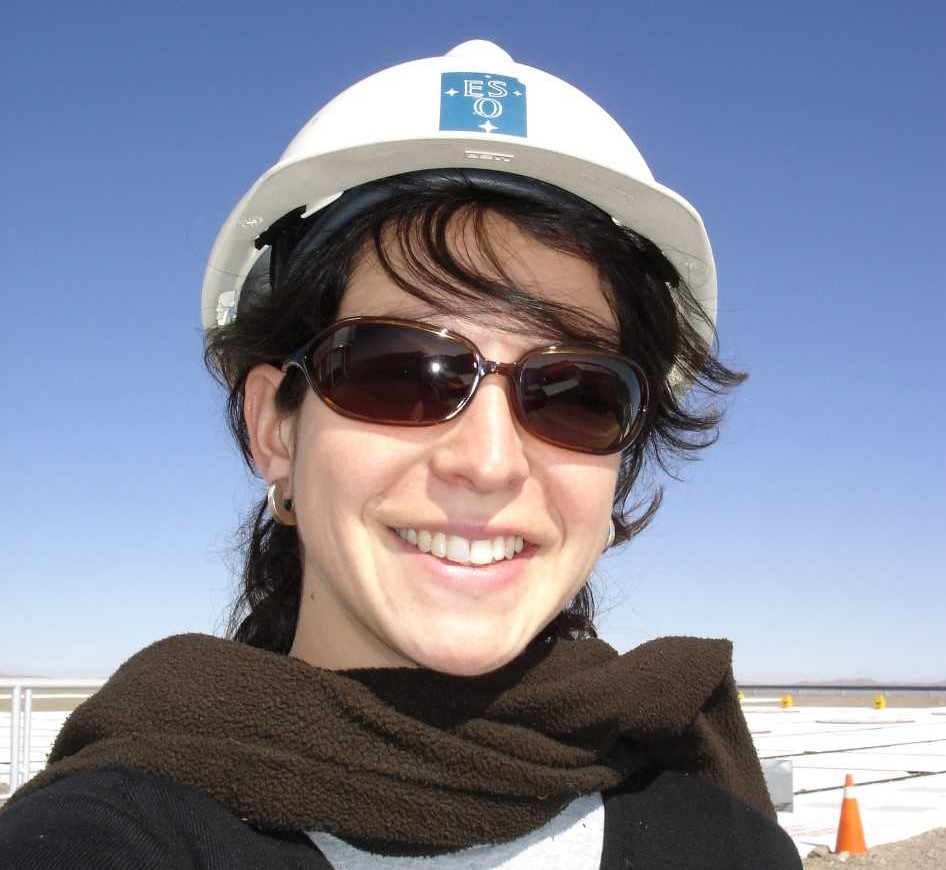
Q. What is your role within ESO?
A. I am an optical engineer working on the Extremely Large Telescope (ELT), supporting the manufacturing and optical verification of the ELT mirrors. I follow up, as a technical expert, the manufacturing of optical systems that ESO contracts to industry.
Q. What is your motivation to work at ESO?
A. I enjoy working at ESO and being part of the ELT Team. We are building the biggest telescope in the world and this is incredibly exciting! I enjoy being close to the mirror blanks and being able to see their evolution towards the final ELT mirrors. I am looking forward to the ELT first light.
Q. Did you have a role model who helped you choose your career in science? How were you encouraged by them?
A. At university, I encountered professors who motivated me and helped me develop new skills and competences. Later, as a young engineer, I had great supervisors that guided, encouraged and challenged me to further develop my career. I am grateful they believed in me and saw my potential.
Q. What do you think could be done to further improve gender balance in science?
A. Much has been done in the last years, with an increased awareness of gender equality aiming to reduce the gender gap. Figuring out how to attract more women and girls to science is not trivial. It is not only about the hiring process, but also about making sustainable hires and retaining their talent. Much can be done at the organisational level, but I also believe that we are the ones within the community who need to advocate and encourage the new generations to pursue a career in STEM.
Eszter Pozna — Software engineer
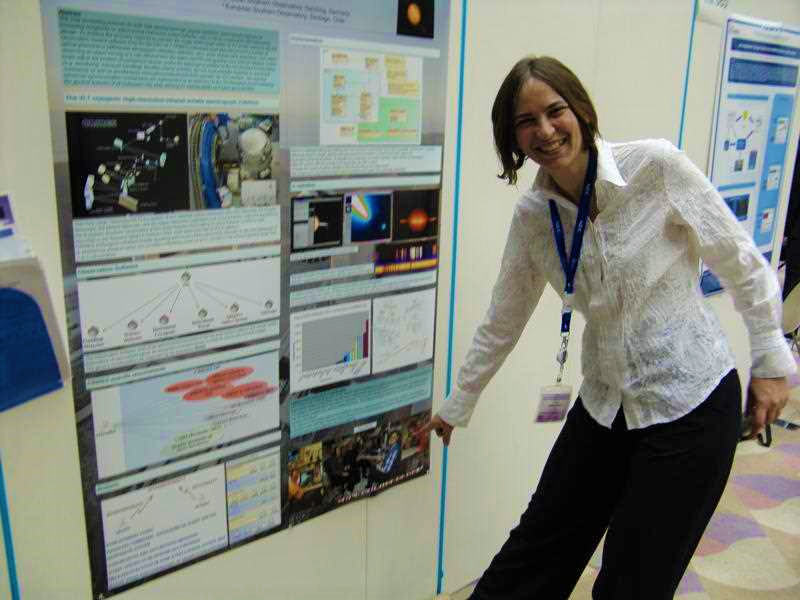
Q. What is your role within ESO?
A. I'm a software engineer working on telescope control. Over the decades, I have had roles in all areas of the software development life cycle, primarily as a software developer, but also as reviewer, designer, and coordinator.
Astronomical observation is a complex computer-aided process. In order to record an image, the motion of the telescope and numerous mechanical components are coordinated together, after which the image is stored and processed further.
I am proud of the software component — BOSS — I developed, which as part of the control system coordinates the top level actions during exposures at La Silla Observatory and Paranal Observatory.
Researchers aim to look ever deeper into the sky for new discoveries (e.g. exoplanets, black holes), which imposes an ever increasing complexity on engineering as well. We are facing many challenges.
Q. How did you get into engineering?
A. The direction was clearly set, having two parents who were both chemical engineers, and the same path chosen by my brother. As for my early interest in computing, I pursued a PhD in parallel processing and I have been working at ESO ever since.
Q. What do you find the most exciting about your job?
A. Engineers don’t get bored here! The commissioning of instruments — for example FLAMES and CRIRES on the Very Large Telescope (VLT), and the HARPS Laser Frequency Comb on the ESO 3.6-metre telescope — is the hardest and also the most rewarding task. Visiting the ALMA antennas at 5000 metres altitude has been a great experience and I’m looking forward to seeing the Extremely Large Telescope (ELT) in operation.
Q. What’s the biggest obstacle you have faced in your career, and how did you overcome it?
A. As a job rotation experiment I was facing a challenge leaving my comfort zone at the VLT to accept an assignment on ALMA. The two projects have little in common and the decision required much of my own time to catch up. Working late during this period and at other times, it was important to me to have my husband's understanding and support
The effort paid off when I combined both my ALMA and VLT experiences on an ELT project. Software is one of the most rapidly changing areas, and I hope that engineers will get more chances to conduct studies during special leave in order to keep up with new technologies.
Rosita Kokotanekova — ESO Fellow
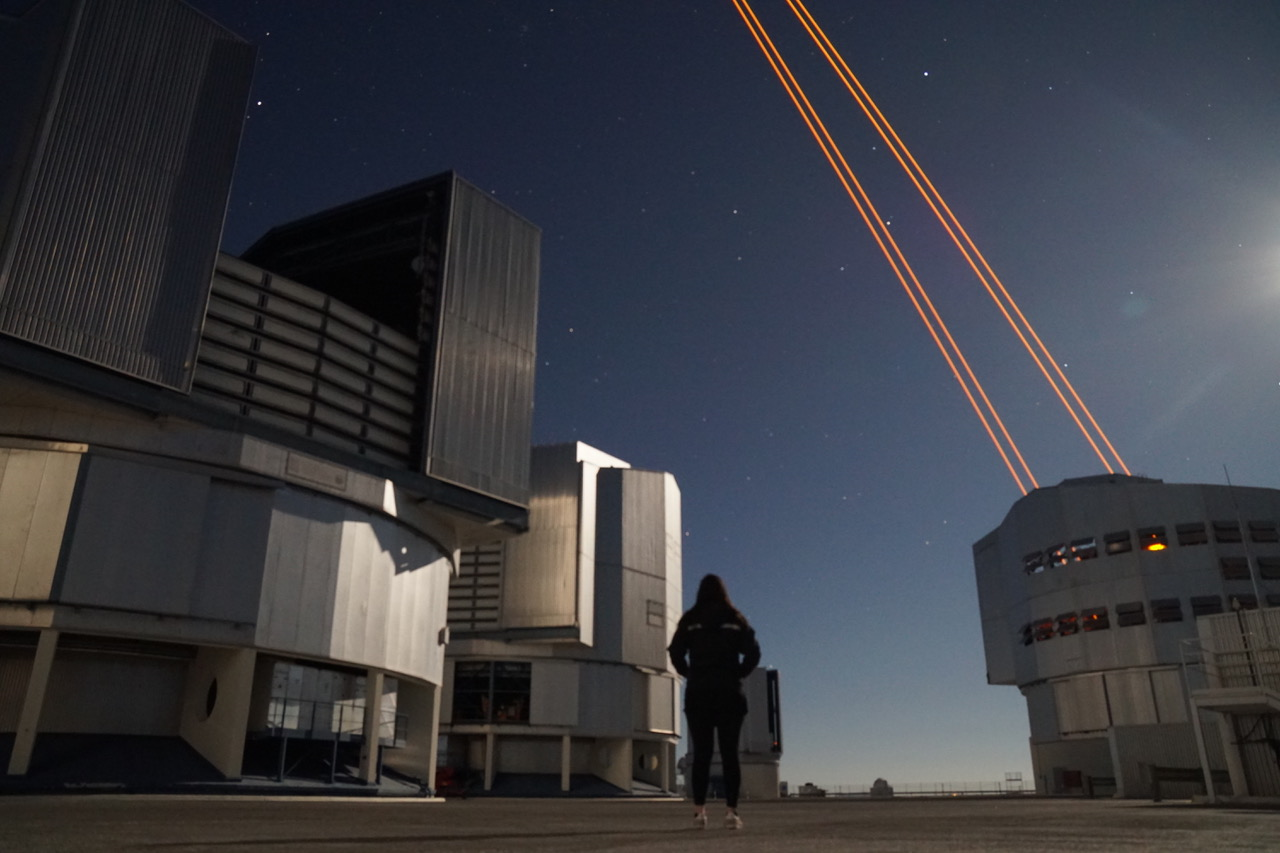
Q. What is your role within ESO?
A. I am currently in my second year of the three-year ESO Fellowship in the headquarters in Garching. The ESO Fellowship programme in Garching consists of up to 25% functional work, while the rest of the time is reserved for science. For my research, I use ground-based telescope observations to understand the intricate history of comets and their environment in the outer Solar System. Besides that, I work as a support astronomer on the third Unit Telescope of the Very Large Telescope, which means that I spend 40 nights a year helping with the operations at Paranal Observatory.
Q. How did you get into astronomy?
A. I always say that my life in astronomy began before I could remember. Both of my parents are astronomers, and while I was growing up, their job was to get children interested in astronomy through extracurricular classes, summer schools, astrophotography courses and regular stargazing events. They never missed a chance to take me and my brother along.
Seeing so many incredible phenomena at a young age sparked my passion for astronomy very early on. Even though I have tried to see myself doing other jobs for a living and I have developed many other interests in the meantime, astronomy has always prevailed so far.
Q. Did you have a role model who helped you choose your career in science? How were you encouraged by them?
A. A lot of my motivation to pursue a career in astrophysics has come from the incredible role models and mentors I have encountered throughout the years. My first role model was my mother Joanna Kokotanekova who enrolled in a PhD programme in heliophysics when I was about ten years old. She managed to follow her science interests while still maintaining her roles as a great mother and teacher.
I am very lucky to have grown up in post-socialist Bulgaria where women were perceived as equal to men in most professional environments and girls were strongly encouraged to study STEM disciplines. I was thus surrounded by successful female role models in all areas of life.
Q. What makes you excited about working at ESO?
A. Ever since the very start of my PhD at the Max Planck Institute for Solar System Research and The Open University, I was convinced that I wanted to work for ESO at some point during my career. I had first heard of ESO as a high school student when I participated in the Catch a Star competition. Then during my PhD, after talking to one of my PhD advisors, Colin Snodgrass (who had been an ESO Fellow in Chile) and to other past and current ESO Fellows, I was convinced that this would be a unique opportunity for me to improve my knowledge about the development, operations and use of some of the most advanced astronomical instrumentations on the planet. Being at ESO, I have the opportunity to learn all of that and I also have the privilege to meet and work with some of the brightest minds in observational astronomy.
Gaitee Hussain — Astronomer and Head of Editorial Group in the Department of Communication
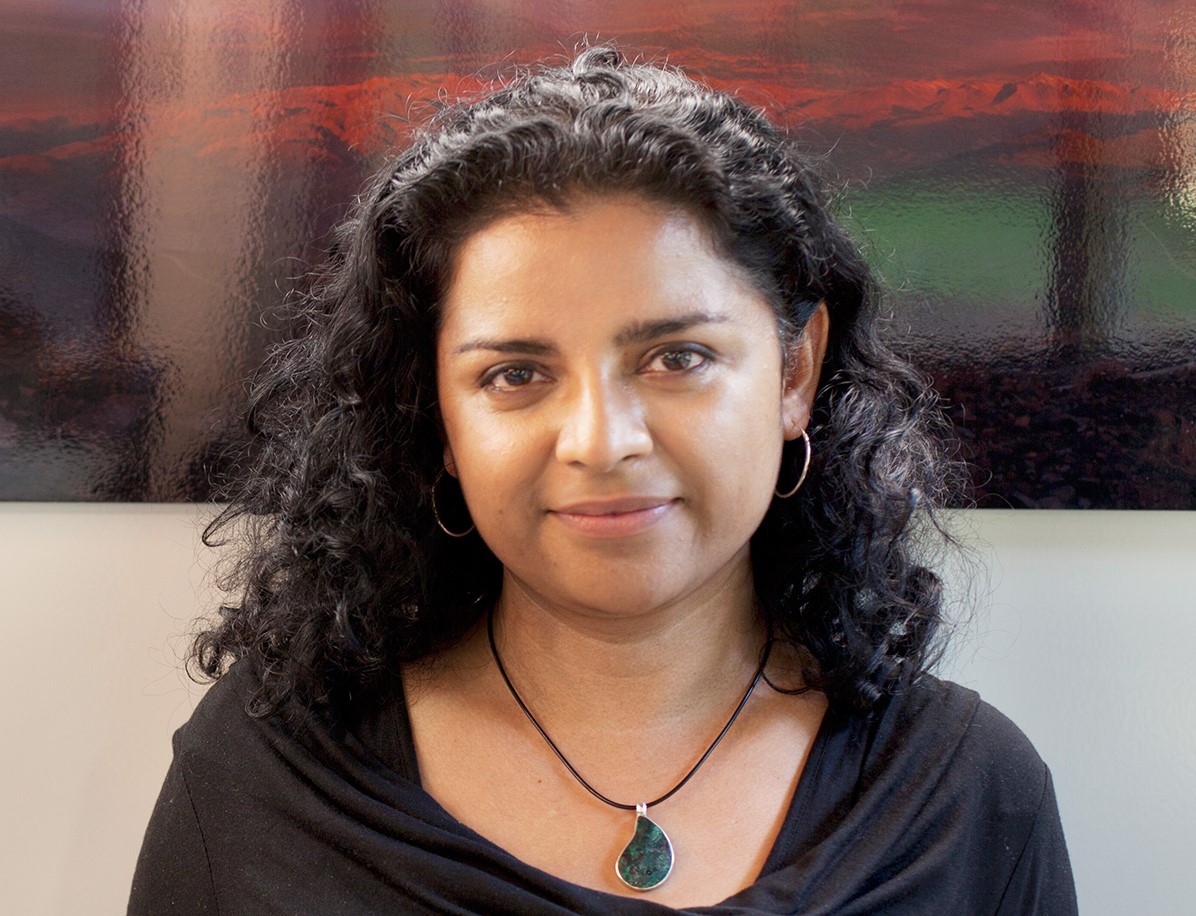
Q. What is your role within ESO?
A. I am currently the head of the Editorial Group in the Department of Communication. The Editorial Group is responsible for designing and producing a wide range of print products (postcards, brochures, posters, books) and merchandise, some of which you can buy online from the ESO shop or in person the ESO Supernova Planetarium & Visitor Centre. I also edit ESO's Annual Report, which provides a comprehensive overview of activities across the entire organisation over the previous year.
I particularly enjoy commissioning and editing articles for The Messenger, a quarterly journal for astronomers at all stages of their careers. In The Messenger, they can read about some of the most exciting science results made possible by ESO's suite of ground-breaking instruments, as well as upcoming opportunities to use ESO facilities. But my absolute favourite part of The Messenger is the inspiring Fellow profiles, in which our brilliant Research Fellows tell us what first brought them into astronomy and describe what they are doing at ESO.
Q. Could you tell us a bit about the route you took to get where you are today?
A. Having discovered Asimov and science fiction early on in my reading life it was probably inevitable, but I was helped along by Ann Archer, an incredible physics teacher who delighted in constantly challenging me. And almost as soon as I started my physics degree at University College London, I discovered a love of observing; on one rare clear night at Mill Hill Observatory in London I got to measure craters on the Moon. This led to a PhD in St Andrews (Scotland) where I found that even observing over long Scottish winter nights weren't enough to cure me of my new obsession. After a few postdoctoral positions, building my research skills, I came to ESO, where I have now been for 12 years.
Q. Have you ever had a ‘Eureka!” moment in your career?
A. Several! It usually happens at conferences; when discussing new results with colleagues, someone will ask a question and suddenly you see the problem you've been wrestling with in an entirely different way. Conferences are my favourite places for breakthroughs and getting new ideas.
Other special moments happen when I know I am the first to see something that no one else has seen. One of the techniques I use enables me to produce detailed maps of the surfaces of stars. Even with the largest telescopes, these stars look like tiny points of light. When I'm analysing a new dataset and know that I am the first person that has ever seen what that particular star looks like, it never fails to thrill.
Q. Have you seen any progress in the gender balance at ESO in recent years; if so, why do you think that is?
A. I have seen an increased awareness of the need for gender balance and greater inclusion in astronomy over the years. I also see an increased fraction of female PhD students and postdocs (Fellows) compared to when I started, which is of course very welcome.
I think some changes to working practices have helped, for example flexible workplaces, a greater availability of internet allowing mobile working and parental leave, but in my opinion the biggest change comes when you encourage a diverse range of opinions and ensure that everyone can contribute to the institute or organisation. ESO is great at doing that, and in turn I see a remarkable level of engagement from ESO students and postdocs which is very encouraging (and inspiring).
However, there is a long way to go to achieve gender balance, and I suspect the real challenge is more in the area of retention not recruitment. There is, in particular, a strong need for better and more affordable support for young families.
Marina Rejkuba — Astronomer and Head of the User Support Department
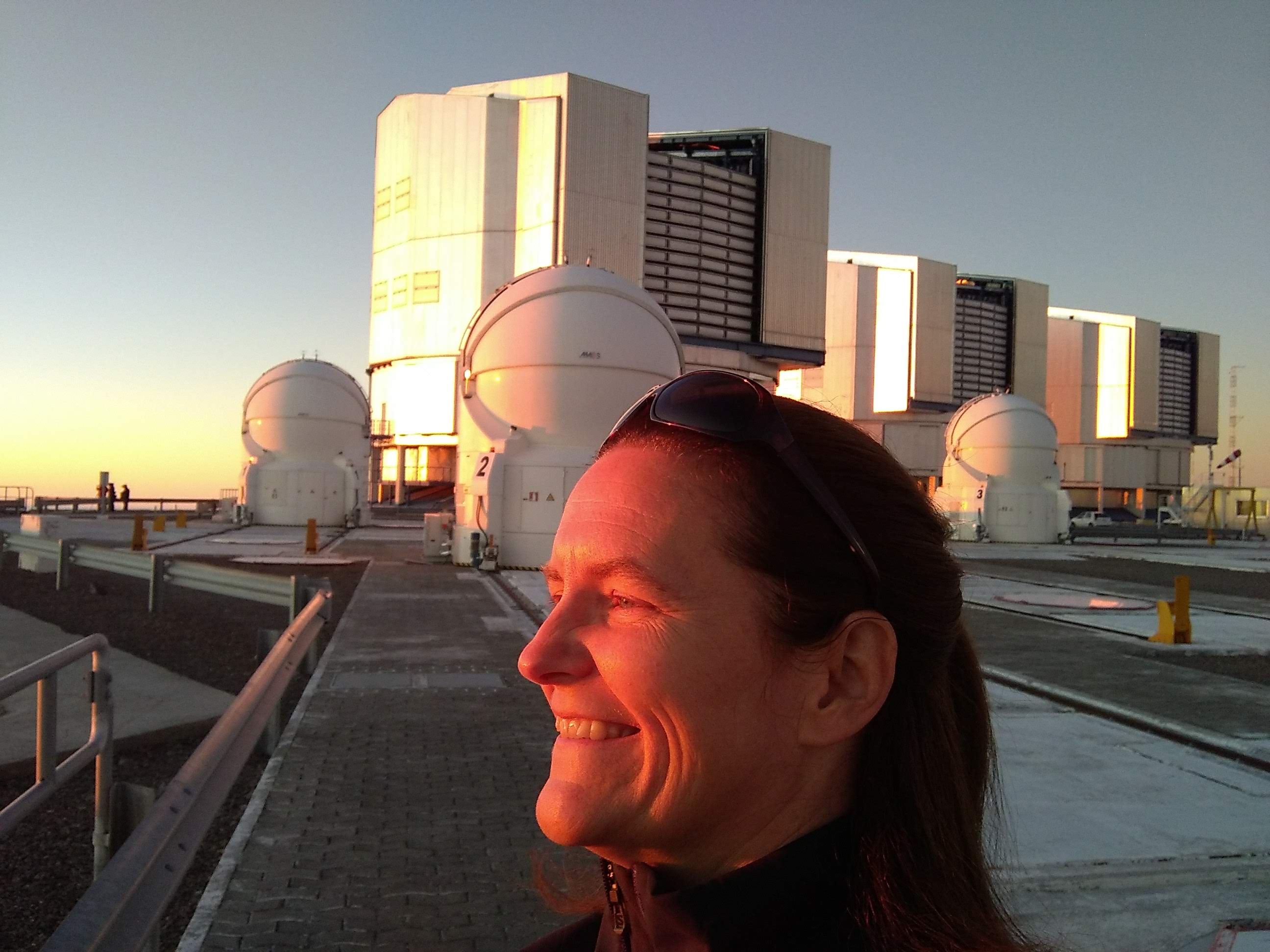
Q. What is your role within ESO?
A. I am an astronomer and Head of the User Support Department, which provides support to astronomers who use the facilities of the ESO observatories — both La Silla and Paranal. The department ensures that users can best achieve their scientific goals.
My astronomical research focuses on understanding stellar populations in star clusters and galaxies. By observing individual stars we can reconstruct the assembly history and evolution of the galaxies in which they live.
Q. What is your favourite part of your job?
A. I feel very proud when I see a new scientific discovery from ESO telescopes, especially when I helped in some way to reach it.
I love discussing scientific results with my colleagues and learning about our own galaxy, our galactic neighbours and the more distant Universe. The pace at which we're making scientific discoveries is increasing, but there is still so much to be learned and there are many exciting new fields of research emerging.
Q. What’s the biggest obstacle you have faced in your career, and how did you overcome it?
A. I wouldn’t call it an obstacle, but the conscious choice to apply for a managerial position meant that I had to add additional responsibilities to my workload. Although it felt like a logical step forward in my career, I wasn’t sure at the time if I would enjoy it as much as the support astronomer duties I had before (it turns out that I do enjoy most of it!). I decided that I had to try because there is no use in complaining about lack of progression in careers for women if we don’t even try when there are good opportunities.
Q. Have you seen any progress in the gender balance at ESO in recent years; if so, why do you think that is?
A. The progress is slow, but I do notice some positive trends. In particular there is more open discussion and awareness that we need to be proactive to make actual progress. One obstacle is that we have a very low turnover of staff, especially among astronomers. There are on average 1–2 openings every year for staff astronomer positions and sometimes these are reserved for internal applicants. In this way it is very difficult to make significant progress. But the balance is much better among ESO Students and Fellows.
But ESO is hiring for the Extremely Large Telescope, so now, especially among engineers, there is a possibility to make a bigger change. That means that we also need to make an effort to attract very good female engineers.
